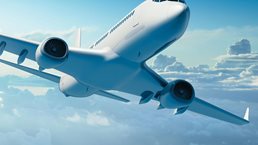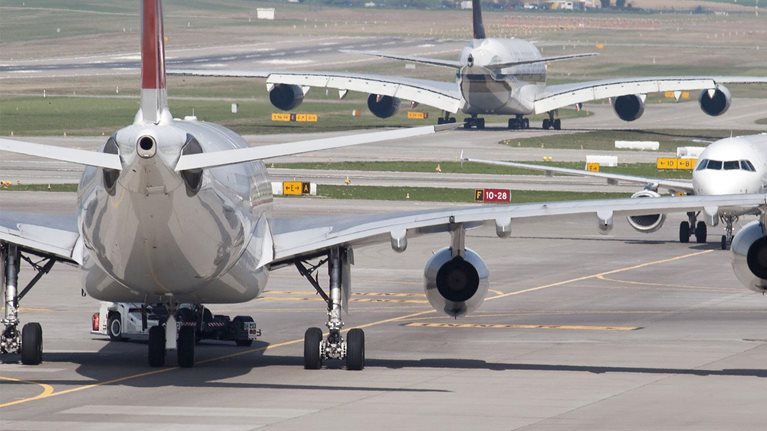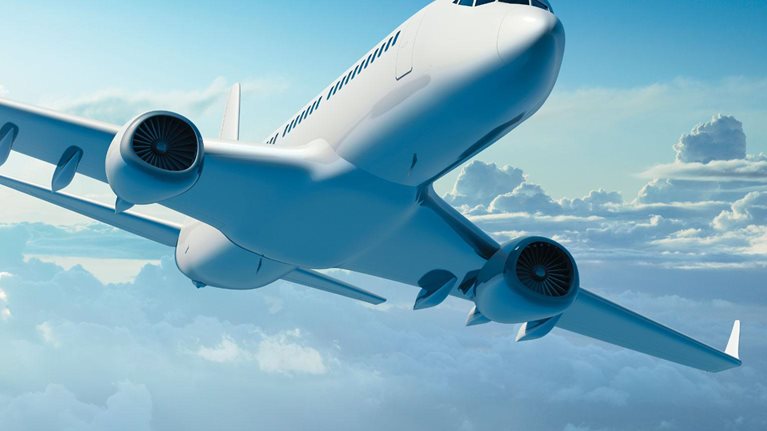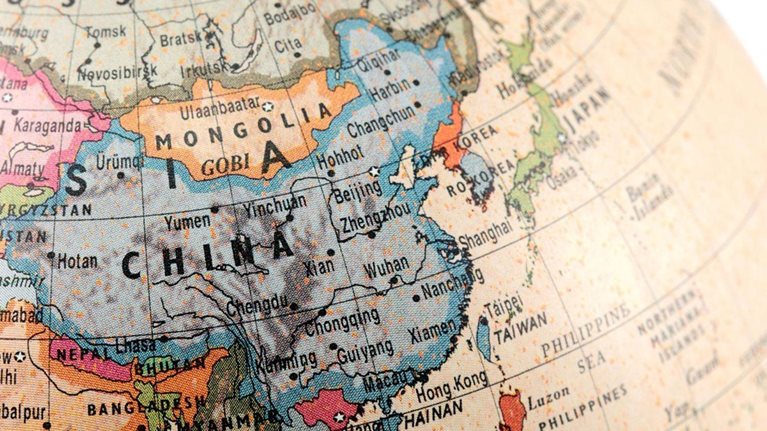The champagne corks had barely landed after a successful 2015 when European airlines received a jolt—and, in the wake of Brexit, warnings of reduced profits came from IAG (June 24, 2016), Lufthansa (July 20), and Air France-KLM (July 27).
So what does the future hold now—and how can flag-carrier airlines, in particular, best position themselves?
This article argues four points:
-
European airlines have had a brief moment in the sun. The sector has been returning its cost of capital for the first time, after a decade that was, as usual, unforgiving for most European airlines, with only three generating enough profit to cover the cost of capital.
-
Four essential uncertainties will shape the aviation industry of 2020. Europe’s carriers should plot their scenarios against them: the meaning and impact of Brexit, the level of continued consolidation, the convergence of low-cost and full-service business models, and the future extent of Europe’s openness to foreign-carrier competition and control.
-
But there are three things we do know—which will continue to shape the underlying fundamentals and intensify pressure on European flag carriers. First, the industry is structurally competitive. The run of profits from 2015 to 2016 is the result mainly of an unanticipated fall in the price of jet fuel. Over the long term, however, airline unit costs and unit revenues have an almost perfect correlation, at more than 0.99, as cost reductions are passed on to consumers.
-
Airlines should start preparing now with no-regrets moves. A temporary windfall, like today’s jet-fuel boon, can have a permanent effect if it is used wisely to fundamentally reset the cost structure or, for some airlines, to invest in product improvements or cash acquisitions of other airlines.
Second and third, the two prevailing winds of the past decade—the rise of low-cost carriers (LCCs) and the “Gulf Plus” airlines (the three big Mideast carriers Emirates, Etihad Airways, and Qatar Airways, plus Turkish Airlines)—are going to continue to reshape the sector. LCCs have almost doubled their capacity over the past decade, contributing to a 40 percent fall in yields on intra-Europe flights. The Gulf Plus airlines, meanwhile, doubled the number of European airports they serve and quadrupled the number of seats. On the Europe–Asia route, European flag carriers have lost one-third of their market, and average yields have fallen 22 percent.
A brief moment in the sun
In 2015, the airline industry as a whole achieved a return on invested capital above the normal return generated by assets with similar risk for the first time. Its equity holders were properly rewarded for the first time since commercial aviation began. Although the industry’s net profit in 2015 of $35 billion needs to be put in perspective (Apple alone generated $54 billion), it is a remarkable result for this highly competitive sector with its structural flaws.
European airlines improved performance too, achieving an average operating margin that was higher in 2015 than at any time in the past decade and, at 5.3 percent, three times higher than the 1.5 percent average of 2006 to 2014. The three large airline groups were all solidly positive: 3.1 percent for Air France KLM, 10.2 percent for IAG, and 5.2 percent for Lufthansa. The smaller and medium-size airlines’ operating margins were 3.4 percent for Brussels Airlines, 5.2 percent for Finnair, 1.5 percent for Norwegian, and 5.6 percent for Scandinavian Airlines; Alitalia broke even. Only TAP, with–4.1 percent, had a negative operating margin.
The International Air Transport Association (IATA) projects profits to continue in 2016 as fuel prices stay low, with Europe’s operating margin in 2016 projected at 5.6 percent.
As this moment in the sun fades, what will the future hold?
Would you like to learn more about our Travel, Logistics & Transport Infrastructure Practice?
Four essential uncertainties about the future
The future is unknown. But understanding four axes of uncertainty can help airlines plan, consider where they would like to be on each axis, how they will bring that position about, how they will prepare for the alternative, and how they can discover quickly which scenario is developing with reliable leading indicators.
Axis 1: Brexit
Exactly what the United Kingdom’s exit from the European Union means in practice may not be clear for a number of years. It could involve changes to:
- Freedom of operation. EU and UK airlines are free to set their own capacity, frequency, and pricing across borders. These freedoms under the European Union may just be continued, should the United Kingdom join Norway and others in the European Common Aviation Area.
- Freedom of movement and all this means for passengers traveling across Europe to work, visit friends and family, and take holidays.
- UK economy. An early estimate by IATA, in June 2016, suggested that British GDP could be 2.5 to 3.5 percent lower in 2020 than without Brexit, reducing total UK passenger demand by 3.0 to 5.0 percent. However, this depends on assumptions about the degree of shock and currency effects that remain uncertain.
Axis 2: Consolidation
Will the smaller carriers be subsumed or continue to survive? Consolidation has been a global trend. Between 2002 and 2014, the intraregion capacity share of the top three carriers (or carrier groups) increased:
- In the United States, from 67 percent to 75 percent, with several big mergers.
- In South America, from 34 percent to 67 percent of market share, largely driven by the merger of LAN and TAM.
- In Europe, from 21 percent to 31 percent; but Europe is still the least consolidated region.
For medium-size European airlines, a belief that consolidation will continue should lead them to prepare for sales on their own terms, with multiple bidders—as achieved by Virgin America in its sale to Alaska Airlines this year.
Axis 3: Business-model convergence
Will the industry move from a business-model dynamic of “LCC versus full-service carrier” to “short haul versus long haul,” as the short-haul model converges on a single hybrid consensus?
Like LCCs, a fully converged short-haul model could offer denser seat configurations; fares with unbundled fees for luggage, meals, and early boarding; and schedules designed for peak passengers rather than in rigid bank structures. But like a traditional full-service carrier, it could also make use of loyalty programs, connections, and sales through global distribution systems to premium customers.
Axis 4: Openness
Will non-European carriers, particularly the Gulf Plus and US airlines, get more rights in Europe—potentially not just freedoms to operate but also to own and control European airlines? Non-European airlines are currently restricted to minority, noncontrolling stakes (such as Etihad’s share in Alitalia). Governments will decide. For countries that do not have major carriers, the question of whether or not they are best served by open skies with foreign control of European airlines may be particularly acute.
Three things we do know about the future
Despite the uncertainty, some secular trends are known, will continue, and should make most flag carriers in particular redouble their efforts to become fit for the future. Like one of the family mottoes in the TV series Game of Thrones, “Winter is coming.”
The industry is competitive
For most airlines, a primary factor in recent results has been a windfall from lower fuel prices. Our analysis of IATA data shows that the 2015 global industry operating profit of $59 billion (8.3 percent margin) would have swung to a loss of $6 billion (–0.9 percent margin) if fuel prices had remained at 2014 levels (Exhibit 1).1

In the future, jet-fuel prices may rise, or prices may fall. But either way, competition will erode the increase in margin from low fuel costs. In this highly competitive industry, unit revenue has closely tracked unit cost with almost perfect correlation, above 99 percent (Exhibit 2). Highly transparent prices, perishable inventory, and strong negotiating positions for suppliers (including aircraft and engine manufacturers and airline labor) ensure that efficiency gains are competed away.

This correlation between costs and revenues is one reason that since 1985, aviation has averaged €13 billion per year of economic loss (that is, the industry’s returns are below its cost of capital). In 2010 to 2014, its average annual economic loss was about €11 billion to €12 billion. Small profits elsewhere in the value chain are captured by OEMs, ground-handling and catering firms, air-navigation-services providers, global distribution systems, and freight forwarders, but these are vastly outweighed by the economic losses by airlines, tilting the business system as a whole to heavy losses.
The continuing rise of LCCs . . .
The second reason to believe in a return to winter is the continuing and remorseless force of two prevailing winds: LCCs within Europe and the Gulf Plus airlines on intercontinental routes. The incremental, year-by-year nature of their growth can obscure the dramatic change they have had and continue to have on the market.
Within Europe, the LCCs almost doubled their seat capacity over the past decade and grew their share of seats from 27 percent to 44 percent. Under this pressure, average yields for flights within Europe have fallen 40 percent over the past decade, and 53 percent since 2000 (Exhibit 3).

. . . and the Gulf Plus
A third certainty is the continued rise of the Gulf Plus carriers, which grew even faster than the LCCs, doubling the number of European airports served (from 44 to 81) and almost quadrupling the number of outbound European seats (from 7 million to 27 million seats). Between 2000 and 2015, Emirates nearly tripled its number of European destinations, and it serves 92 percent of them at least daily.
More troubling for European flag carriers, these carriers generally offer lower fares than European carriers—and provide service that at least matches that of their European competitors. Qatar is rated as one of just eight five-star airlines by industry standard Skytrax.2 The other Gulf Plus carriers get four stars, as does Air France KLM, British Airways, and Lufthansa. Alitalia and Iberia are three-star airlines.
The effect on European carriers’ market share and yield has been dramatic (Exhibit 4). On Europe–Asia flows, the share of passengers connecting in European hubs (dominated by the flag carriers) fell sharply between 2006 and 2015, from 29 percent to 20 percent. The share connecting in the Middle East and Istanbul tripled, from 9 percent to 28 percent. In 2006, the top three connecting airports for passengers making a one-stop connection on Europe–Asia routes were Frankfurt, Amsterdam, and Paris; today, they are Dubai, Doha, and Istanbul.

There is no sign yet that this pressure on European carriers will let up. Aircraft manufacturers’ order books are of similar size to the current fleet: Emirates, with a current fleet of 244, has 298 on order; between 199 and 340 are on order for each of the other Gulf Plus airlines. Similarly, Gulf Plus airports (Abu Dhabi, Doha, and Istanbul) are planning multibillion-dollar investments to accommodate expected significant growth in traffic.
Preparing for winter: Cost restructuring, product improvement, and cash acquisitions
Knowing that harder competitive dynamics will return, airlines can take concrete actions to prepare now. Used well, the temporary windfalls of oil price can have permanent effects.

The clairvoyant airline
And it is imperative that they do so. Given the outlook, it is not an exaggeration to say that for many carriers, the decision for executives—and the governments that may own them, and the workforces that depend on them—is between an airline fit to compete effectively or no airline at all.
First, airlines can invest windfalls to permanently reset their cost structure.
Major changes to the cost base are possible: just within Europe, Aer Lingus Group achieved a 46 percent unit-cost restructuring from 2001 to 2004; TAP achieved 17 percent over 8 years, ending in 2007; and Iberia achieved 16 percent in just three years, from 2013 to 2015.
This can mean:
- Winning select battles with suppliers and partners. Airlines can use the “war chest” of retained earnings to ride out troubles as contracts are renegotiated with labor groups, global distribution systems, and agencies. The money can tide the airline over from short-term losses. For example, airlines can reduce commissions to agencies to secure lower ongoing distribution costs and use the war chest to tide themselves over and reduce any temporary backlash.
- Buying aircraft. Purchases are cheaper than leases over the lifetime of the asset, even including the value of flexibility that leases bring. Airlines should look to buy more of their aircraft as they replace their fleet, lowering their lease costs.
- Bringing maintenance back in-house where appropriate. Historically, airlines have had to sign expensive ongoing maintenance contracts for engines and airframes in return for lower up-front purchase prices (the “razors and blades” pricing model). Now could be the time to pay more up front for spares and to reduce operating expenses through greater use of in-house maintenance, repair, and operations.
Second, windfalls can be invested to improve products, including zero-based budget reviews of all spending on customer experience to evaluate what truly drives satisfaction.
Third, some airlines might use their windfalls to make cash acquisitions of other carriers. Cash acquisitions allow much greater integration and lowering of costs than the complex and politically driven share swaps that the industry has become used to.
It has been a good year for European flag-carrier airlines, thanks to the windfall from low fuel prices. But industry structure has not changed, and the pressures on yields and market-share gains are likely to continue unabated. Airlines should use any breathing space remaining to secure their ability to compete in the longer term, by studying the uncertainties, understanding the structural drivers, and investing their windfall—in particular, in resetting their cost structure. European governments should be aware of the paradox they have created, with one of the most open and liberal markets in the world (encouraging capacity growth and benefiting consumers), combined in certain cases with some of the most restrictive labor markets, which prevent true cost restructuring. The stakes are high: even for airlines, in the long run, the only two outcomes are the same as in Game of Thrones: “You win or you die.”


